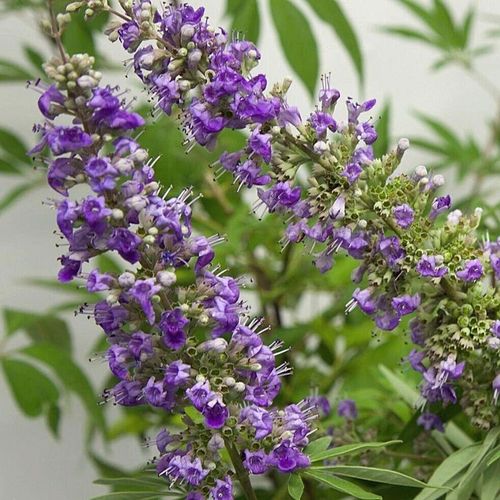If you were to examine some of the many "women's hormone-balancing" products in health-food stores and pharmacies, you would most likely see chasteberry (also known as Vitex agnus castus) listed as an ingredient. It has been recommended for female conditions, including hormone-related acne, fibrocystic breast syndrome, endometriosis, infertility, lactation difficulties, menopausal hot flashes, menstrual disorders, ovarian cysts and uterine fibroids. In other words, it is touted as helping almost all major female conditions.
The herb comes from the berries of the chasteberry tree, actually a shrub found in subtropical climates. The ancient Greeks used chasteberry as a symbol of chastity in young women, hence the name "chaste berry" or "chaste tree."
HOW IT WORKS
Chasteberry does not contain hormones. It acts on the pituitary gland in the brain to increase the production of luteinizing hormone (LH). LH stimulates the ovaries to release eggs, as occurs with ovulation. Ovulation triggers a surge in levels of the hormone progesterone. This release of progesterone is important in maintaining a balance with the other major female hormone, estrogen. Research has shown that some premenopausal women do not ovulate regularly. This sets the stage for what is known as "estrogen dominance"—too much estrogen relative to progesterone. By helping to normalize progesterone levels, chasteberry promotes hormone balance. This is why it is effective fbr so many female conditions, including premenstrual syndrome and fibrocystic breast disease as well as uterine fibroids in women of all ages, which are in large part caused by estrogen dominance.
Chasteberry also has been shown to lower levels of the hormone prolactin. When elevated, this hormone, which is secreted by the pituitary gland, is associated with premenstrual syndrome, irregular menstrual cycles and infertility.
DOSAGE
For all of these conditions, I commonly recommend 160 mg to 240 mg daily of a 0.6% aucubin or 0.5% agnuside extract (important active ingredients) in capsule form—available from Enzymatic Therapy (800-783-2286, www.enzy.com) and Natural Factors (sold by Vitacost, 800-381-0759, www.vitacost.com). Or I suggest 40 drops of the tincture in four ounces of water, taken once daily.
For best results, chasteberry should be used until the problem is alleviated and then for an additional three months. 'Women may notice improvements within two menstrual cycles.
Chasteberry often needs to be taken for four to six months or longer for long-standing cases of hormone imbalance that have resulted in infertility, amenorrhea (no menstrual cycles), irregular menstrual cycles or endometriosis.
Mild digestive upset, nausea, headaches and skin rash are infrequent side effects of chasteberry. Stop taking it if they occur.
Chasteberry should not be used by women taking birth control pills or injections. It also should be avoided by those taking drugs that block dopamine receptors, such as the antipsychotic medication haloperidol (Haldol).
As with most herbs, chasteberry should be avoided during pregnancy, although it is helpful for lactation in nursing mothers.
Lastly, some women experience an "adjustment phase" during the first few months of taking chasteberry. It is not uncommon for the menstrual cycle to shorten or lengthen, and flow can become lighter or heavier than what it was previously. This adjustment phase almost always normalizes after two to three months of use.
